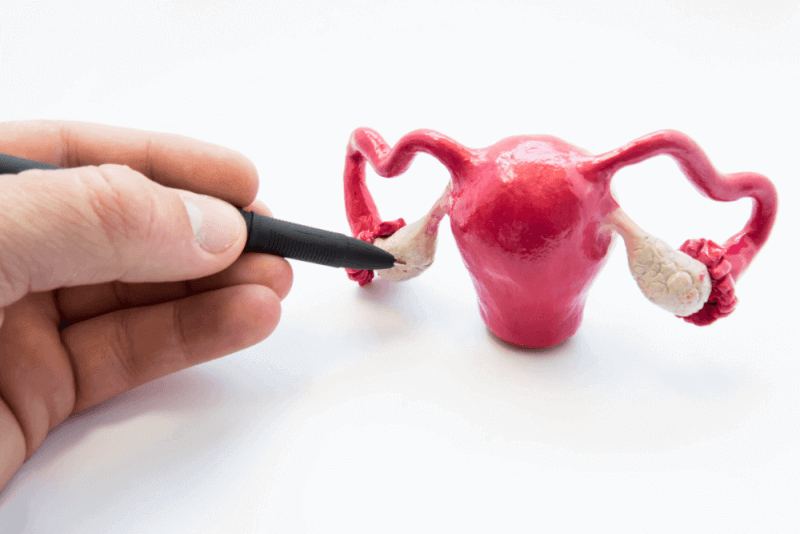What is the Hymen?
The hymen, medically known as the hymen, is a membranous layer located approximately 1.5 cm inside the vaginal entrance, developed in female embryos during the embryological period. Although the exact function of the hymen is not fully understood, it is believed to protect the vagina of the fetus from microorganisms while in the womb. While the hymen develops in most female children, in some cases, it may not form.
The hymen is often given sociological significance in addition to its anatomical function. In traditional and underdeveloped societies, a woman's virginity is often judged based on the hymen. The tearing of the hymen is typically associated with bleeding; however, due to the structure and elasticity of the hymen, bleeding may not always occur.
To understand the structure of the hymen, a medical examination by a doctor is necessary. Through a gynecological examination, it can be determined whether the hymen is elastic. Individuals with an elastic hymen may not experience bleeding during intercourse.
What is Hymenoplasty?
Hymenoplasty, also known as hymen repair surgery, is a vaginal aesthetic procedure. The purpose of hymenoplasty is to restore the torn hymen by suturing the vaginal edges together, allowing the hymen to regain its original state. Once the hymen is restored, bleeding occurs again during sexual intercourse.
There are different methods of hymenoplasty. The choice of method is determined after a physical examination and patient history is taken. During the physical examination, the type of hymen is identified, and the appropriate method for suturing is selected.
How is Hymenoplasty Performed?
Two methods are commonly used in hymenoplasty. These procedures are generally performed under local anesthesia, and after the operation, patients can continue their lives as usual. Long-term and short-term repairs are the preferred methods for hymenoplasty.
Long-term repairs are considered more suitable for individuals who do not plan to engage in sexual intercourse for an extended period. Short-term repairs are more appropriate for those who plan to engage in sexual intercourse within a week. The techniques used for short-term and long-term repairs differ. The flap method and microsurgical techniques are used in long-term repairs.
Why is Hymenoplasty Performed?
Hymenoplasty is performed to repair the hymen that has been torn due to physical trauma, masturbation, or sexual intercourse. It can also be performed due to sociological pressure in underdeveloped societies to ensure bleeding occurs during sexual intercourse.
The number of sexual encounters does not affect the possibility of hymenoplasty. There is no connection between sexual intercourse and hymenoplasty. Women who have had abortions, miscarriages, or childbirth can also undergo hymenoplasty.
Types of Hymenoplasty
Surgical intervention is required to restore the integrity of the hymen after it has been torn. Hymenoplasty can be divided into two categories: temporary hymenoplasty and permanent hymenoplasty. The method to be used is determined based on the patient's examination.
Permanent Hymenoplasty
In permanent hymenoplasty, the hymen remains intact for years. It continues to maintain its integrity as long as there is no sexual intercourse. The most commonly used method is known as the flap method. In this technique, tissue from the lower wall of the vagina is sutured to the upper wall, and when the penis enters the vagina, the flap is torn, causing bleeding.
Another method is the microsurgical technique. The torn edges of the hymen are rejoined using microsurgery, restoring the integrity of the hymen. Hymenoplasty can also be performed in conjunction with vaginal tightening. This method is particularly preferred in women who have had multiple sexual encounters, miscarriages, or childbirth.
Temporary Hymenoplasty
After temporary hymenoplasty, sexual intercourse must occur within 7 days. The stitches used during the procedure are thin, and nothing is felt during intercourse. Temporary hymenoplasty is painless and takes approximately 15 minutes to perform. Depending on the patient's condition, local anesthesia or sedatives may be used.
Types of Hymens
There are different types of hymens, and this varies from person to person. The vascular structure, shape, thickness, and elasticity of the hymen, as well as how the first sexual encounter occurs, determine the amount of bleeding. Not every woman experiences bleeding when the hymen tears during the first sexual encounter. An elastic hymen can stretch during intercourse and may not allow bleeding. Conversely, a thick-edged and vascular hymen may prevent sexual intercourse.
Elastic
The elastic hymen has an opening diameter of more than 20 mm on average, and during intercourse, it stretches outward due to its elastic structure, allowing it to expand further. After intercourse, the hymen can return to its original state, preventing bleeding during sexual intercourse.
Annular
The annular, or ring-shaped hymen, is the most common type of hymen. The annular hymen has a round opening in the center. The diameter of this opening is typically between 10-20 mm, and if it is over 20 mm, bleeding may not occur.
Septate
The septate hymen, also known as the partitioned hymen, is a rare condition. The opening of the hymen is divided into two by a separate tissue. Women with septate hymen may experience difficulty and pain during sexual intercourse.
Cribriform
The cribriform hymen has multiple small openings of varying sizes. Women with a cribriform hymen may be unable to engage in sexual intercourse, and the cribriform hymen is surgically opened.
Post-Hymenoplasty Care
After hymenoplasty, the following precautions should be taken:
- Pay attention to genital hygiene after the surgery,
- Engage in sexual intercourse only after the hymen has fully healed,
- Avoid heavy exercise,
- Avoid riding bicycles or motorcycles for a while,
- Use the medications prescribed by your doctor,
- If you experience bleeding or other issues, visit your doctor for a check-up.
What are the Risks of Hymenoplasty?
When performed by a reliable physician, there are no significant risks associated with hymenoplasty. As with any surgery, there is a risk of infection and bleeding, but other than that, there are no major risks. Mild bleeding or mood changes may occur for a few days after the surgery.








